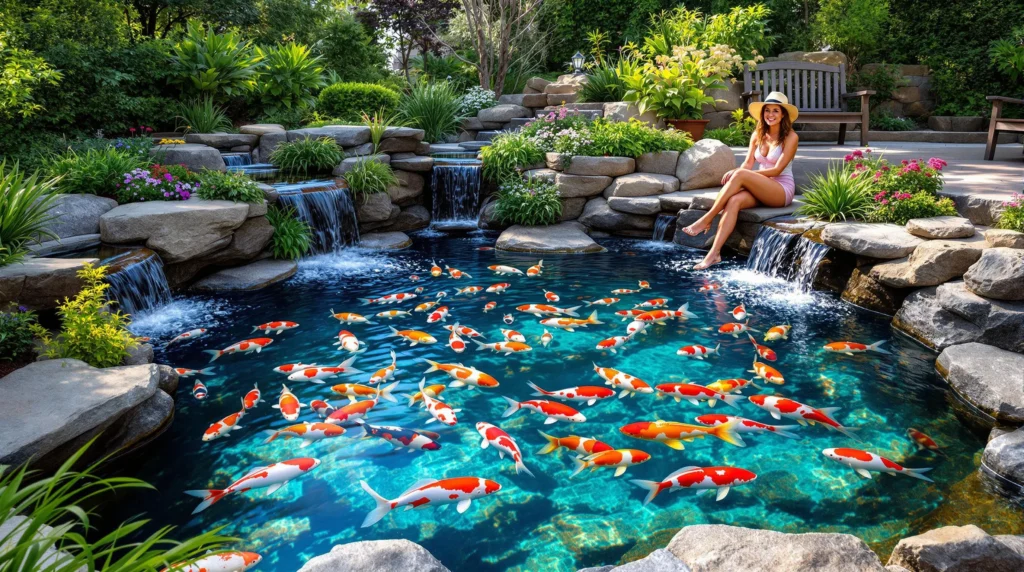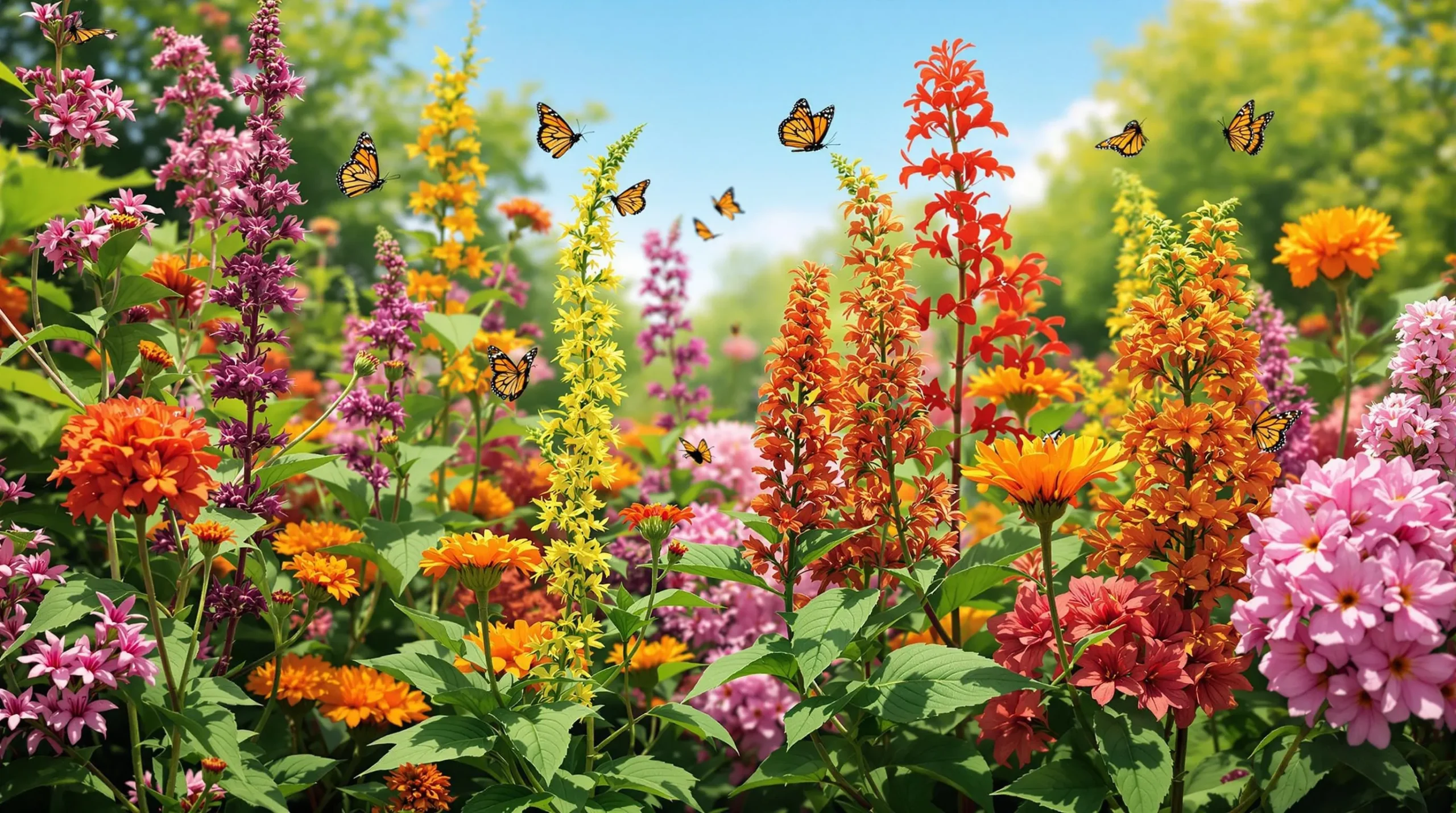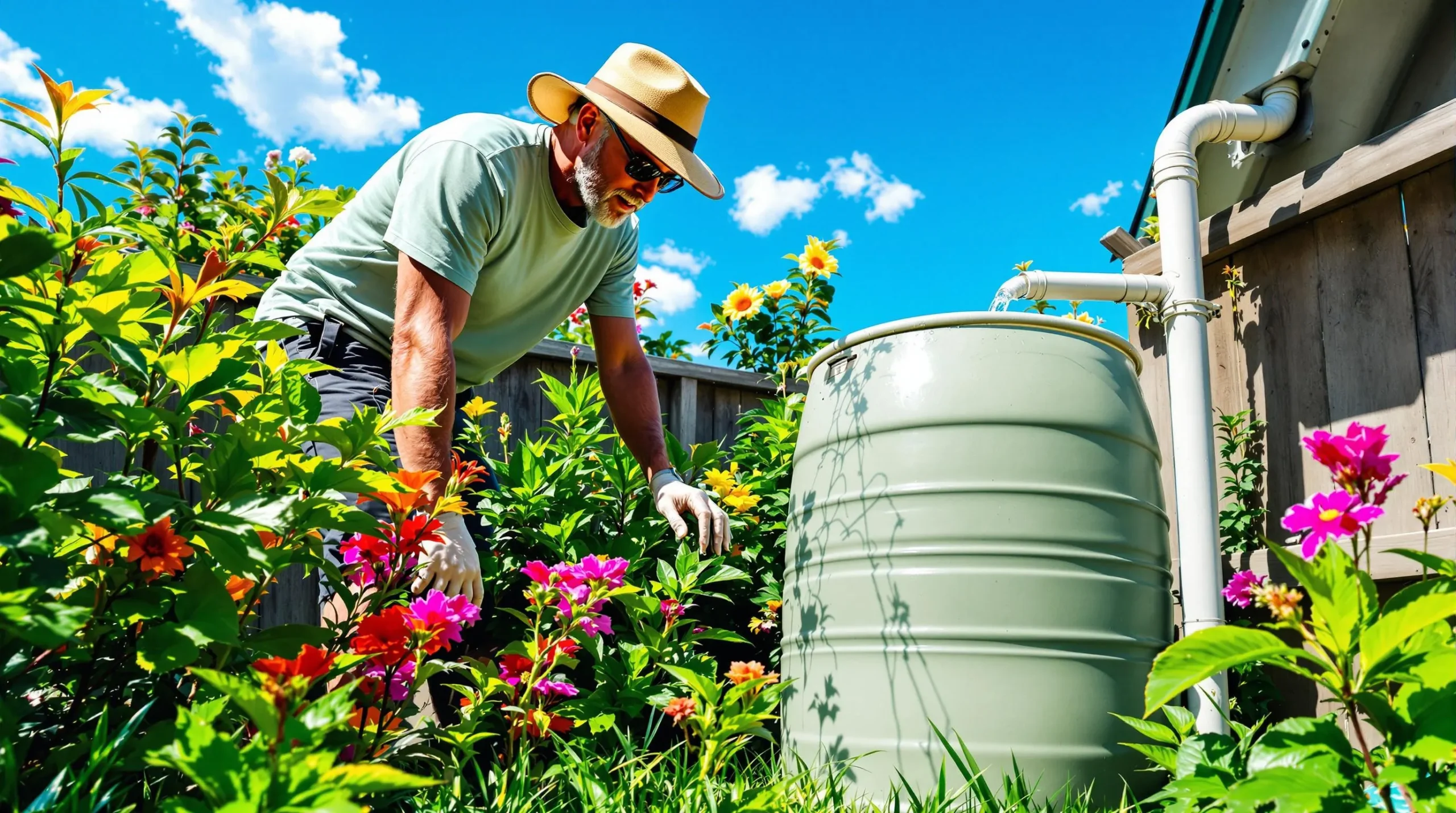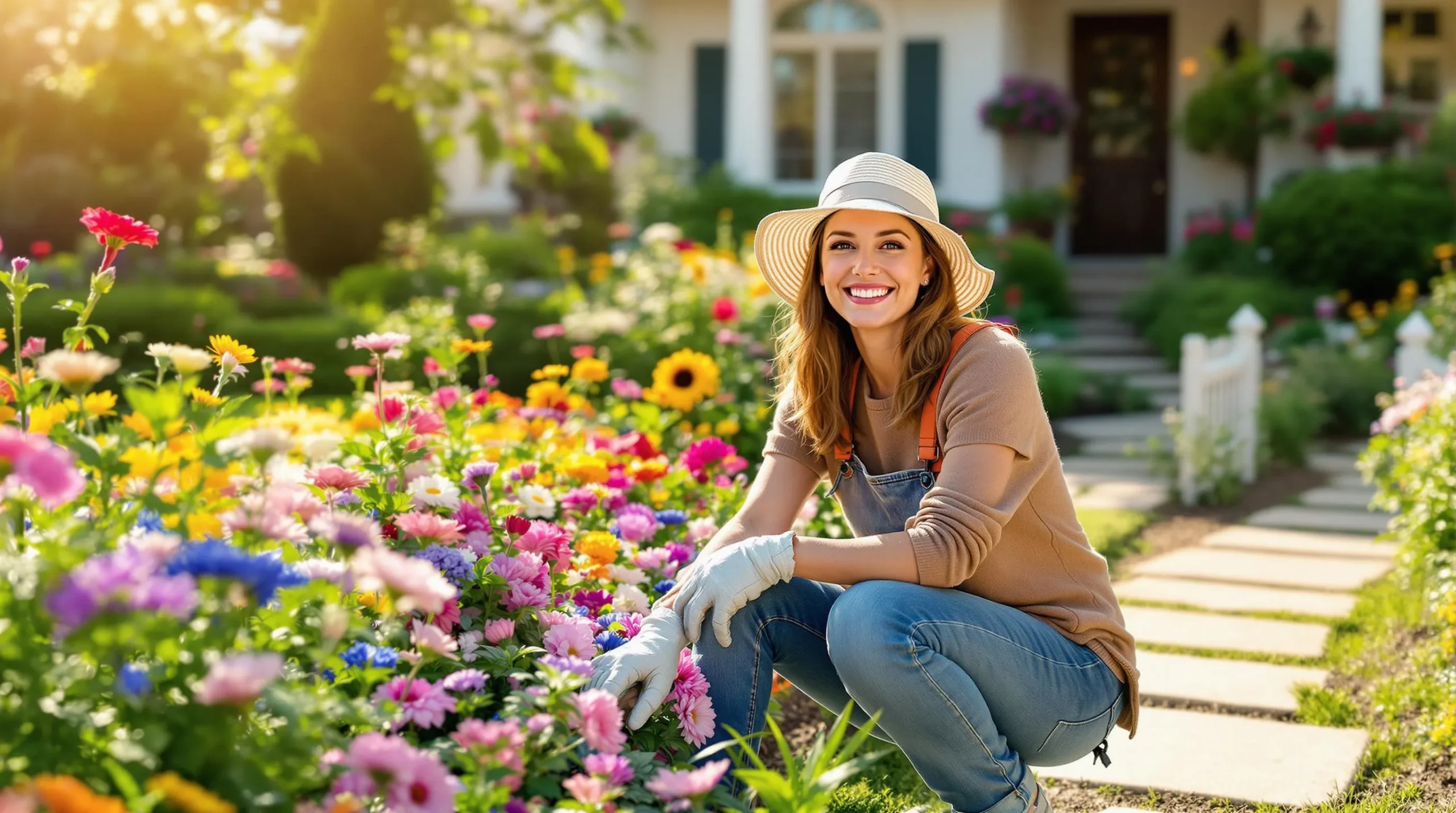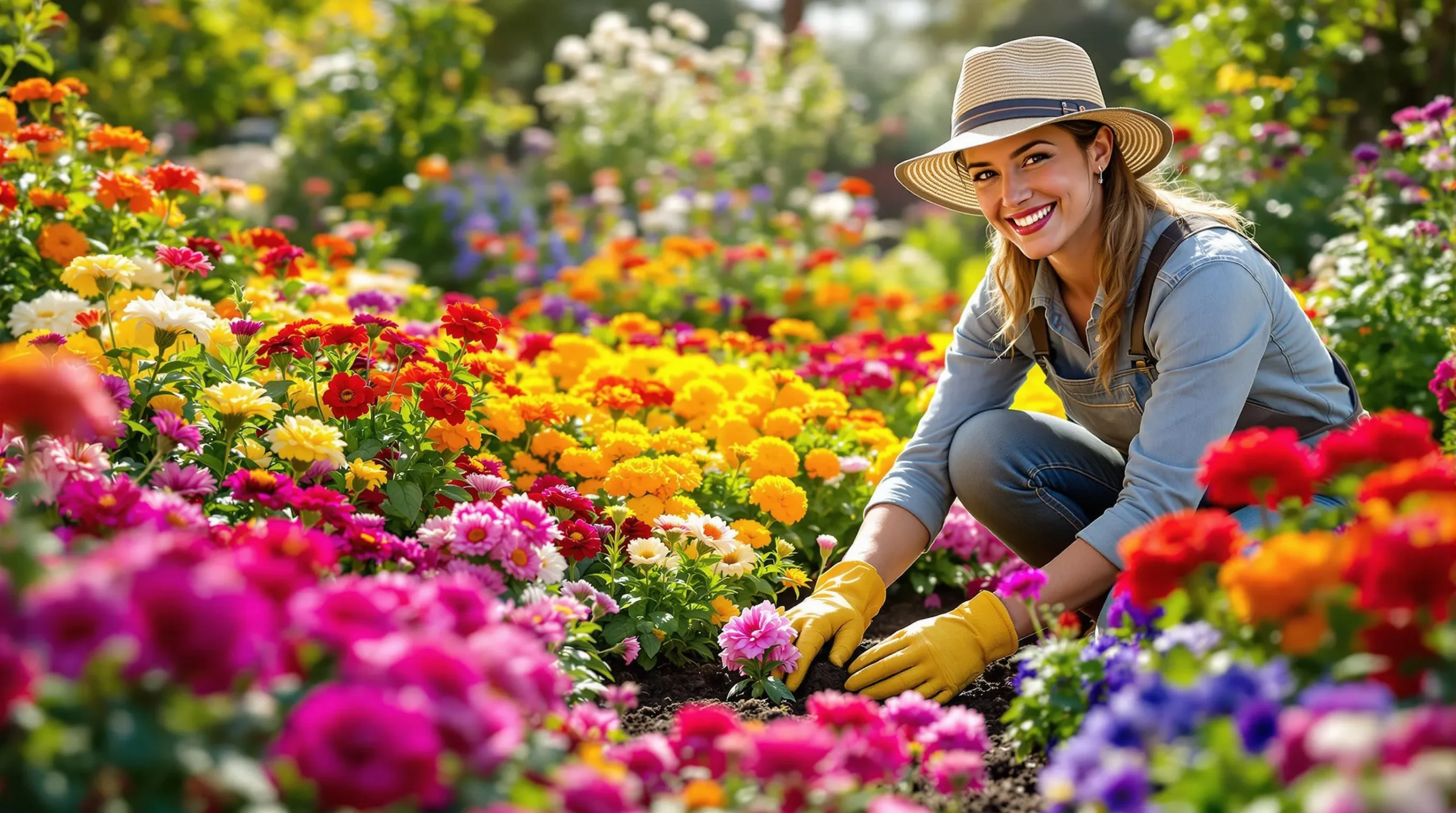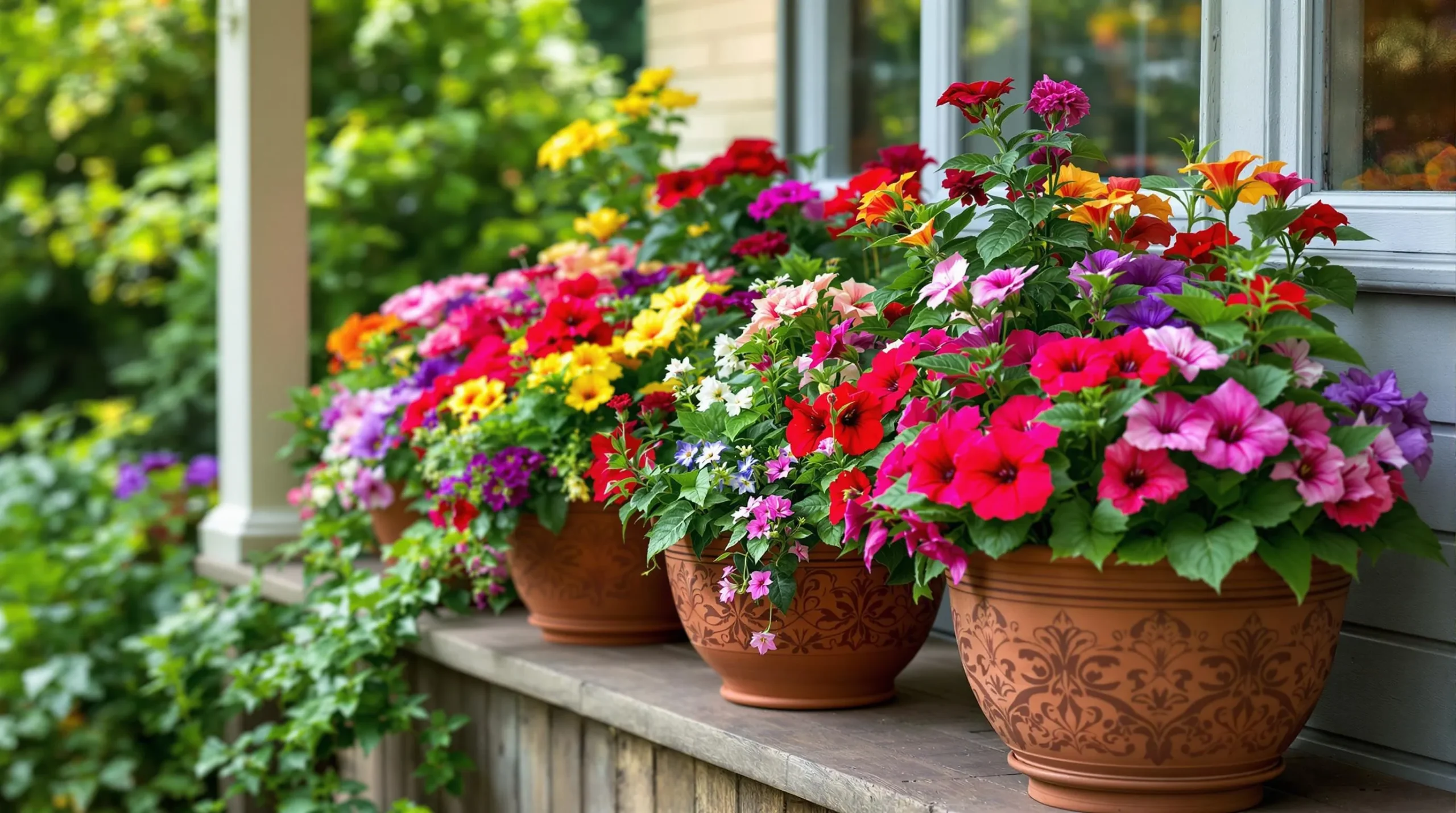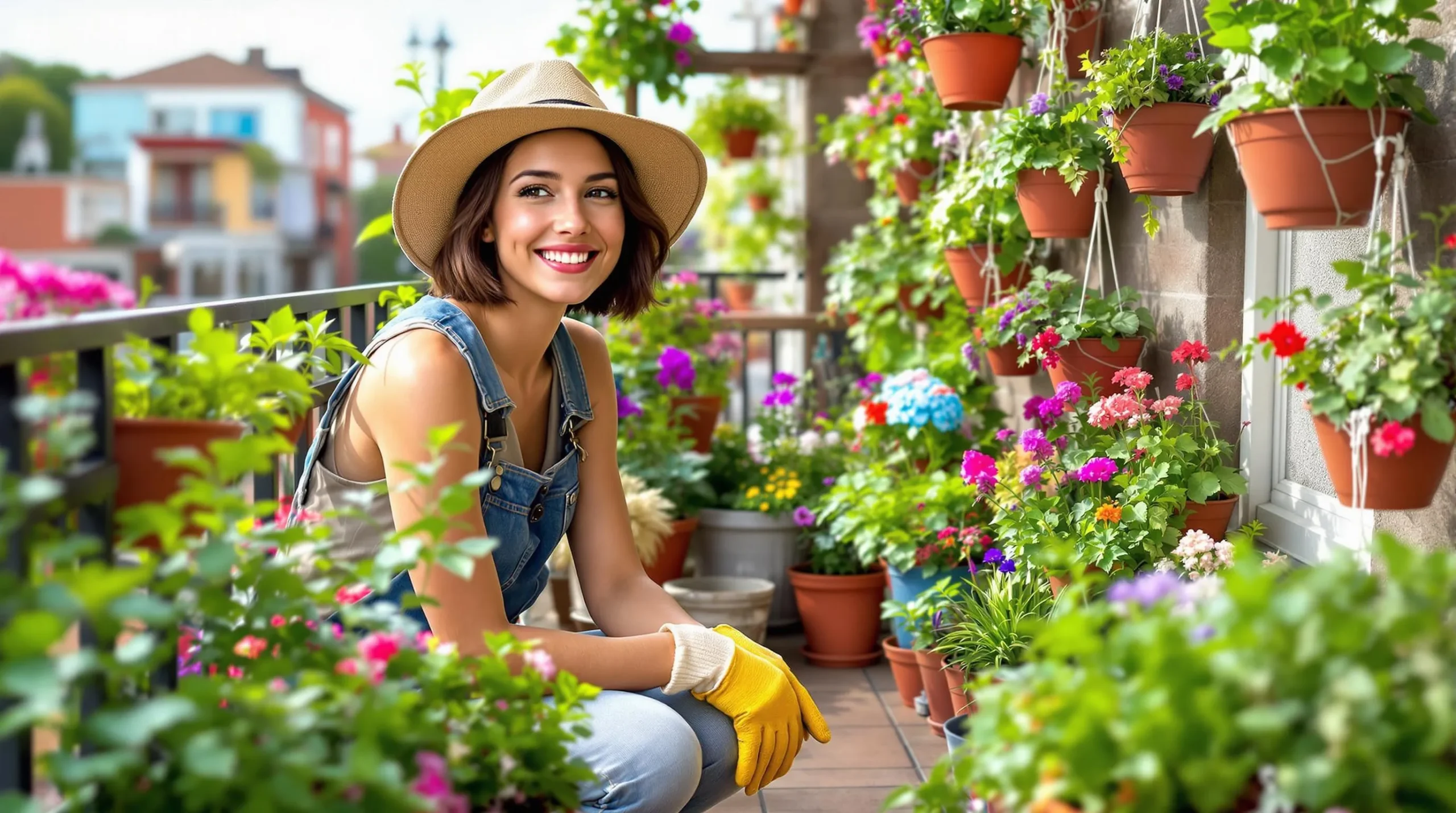10 Stunning Koi Pond Ideas to Transform Your Outdoor Space
1. Natural Stone Borders
Create a visually appealing boundary for your koi pond with natural stone borders. Stones like slate, granite, or limestone provide a rugged, earthy aesthetic that blends seamlessly with landscaping. You’ll find that stacking different sizes and shapes creates depth and interest, while flat stones can serve as perfect sitting areas to observe your colorful koi. For added charm, incorporate small rock gardens around the perimeter with drought-resistant plants like sedums or hens and chicks.
2. Multi-Level Water Features
Transform your koi pond into a ever-changing industry with multi-level designs. Different depths and platforms create visual interest and provide various swimming zones for your fish. You can construct these levels using submerged shelves, creating shallow areas for water plants and deeper sections (at least 4 feet) where koi can safely overwinter. Adding connecting streams or small waterfalls between levels enhances water circulation and creates delightful splashing sounds that mask ambient noise.
3. Japanese Garden Inspiration
Embrace the traditional origins of koi ponds with Japanese garden elements. Incorporate a wooden arched bridge spanning across a narrow section of your pond to create a stunning focal point. Complement the design with carefully positioned bonsai trees, Japanese maples, and ornamental grasses. Add authentic touches like stone lanterns, bamboo water features, and carefully raked gravel areas to achieve that perfect zen aesthetic that honors the cultural heritage of koi keeping.
4. Integrated Seating Areas
Design your koi pond with built-in seating to create a perfect observation spot. Curved stone benches, wooden decks extending over the water’s edge, or paved patios adjacent to the pond all provide comfortable vantage points. You’ll appreciate having dedicated spaces to relax and enjoy your aquatic display, especially when positioned to catch morning or evening light. For year-round enjoyment, consider adding weather-resistant cushions and nearby shade options.
5. Cascading Waterfall Features
Add movement and sound to your koi pond with a stunning waterfall. Strategically stacked rocks creating multiple drops will not only please the eye but also aerate the water, improving oxygen levels for your fish. You can design a dramatic single drop or a gentle series of smaller cascades depending on your space and aesthetic preferences. For extra visual impact, position underwater lights to illuminate the falling water at night, creating magical reflections.
6. Underwater LED Lighting
Illuminate your koi pond with strategic underwater lighting to showcase your fish after dark. Submersible LED lights in various colors can highlight exact features, create dramatic shadows, or simply make the brilliant colors of your koi visible during evening hours. You’ll want to position lights away from areas where fish typically rest to avoid stressing them. For special occasions, programmable RGB lights can create changing patterns and colors across your water surface.
7. Floating Gardens
Enhance your koi pond with floating water gardens that provide shade and interest. Lotus flowers, water lilies, and floating hyacinths create stunning displays while naturally filtering the water. You’ll find that these plants help reduce algae by blocking sunlight and absorbing excess nutrients. For maximum impact, choose varieties with different blooming seasons to ensure year-round visual interest, and position them to leave open swimming lanes for your fish.
8. Glass Viewing Panels
Install glass viewing panels along one side of your koi pond for a unique perspective on your underwater industry. These aquarium-like windows allow you to observe your fish swimming at eye level, showcasing their graceful movements and vibrant colors. You can integrate these panels into a raised pond wall or design a partially sunken viewing area. For optimal visibility, position the glass in a shaded location to prevent glare and add targeted underwater lighting.
9. Miniature Network
Create a self-sustaining network in your koi pond with carefully selected plants and beneficial organisms. Incorporate submerged plants like anacharis and floating plants like water lettuce to naturally filter water. You’ll enhance water quality by adding beneficial bacteria and microfauna that break down waste. Design planted bog areas around the edges with moisture-loving plants like iris and cattails that further purify water while creating habitat for beneficial insects and small wildlife.
10. Winter-Ready Features
Design your koi pond with cold-weather considerations in mind. Include deeper sections (at least 4 feet) where fish can retreat during freezing temperatures, and install a reliable de-icer or aerator to maintain a small opening in the ice for gas exchange. You might consider adding a small greenhouse-style covering over part of the pond that can be deployed during the coldest months. For year-round enjoyment, incorporate evergreen plants and winter-blooming specimens like witch hazel around the pond perimeter.
Creating the Perfect Koi Pond Location: Finding Balance Between Sun and Shade
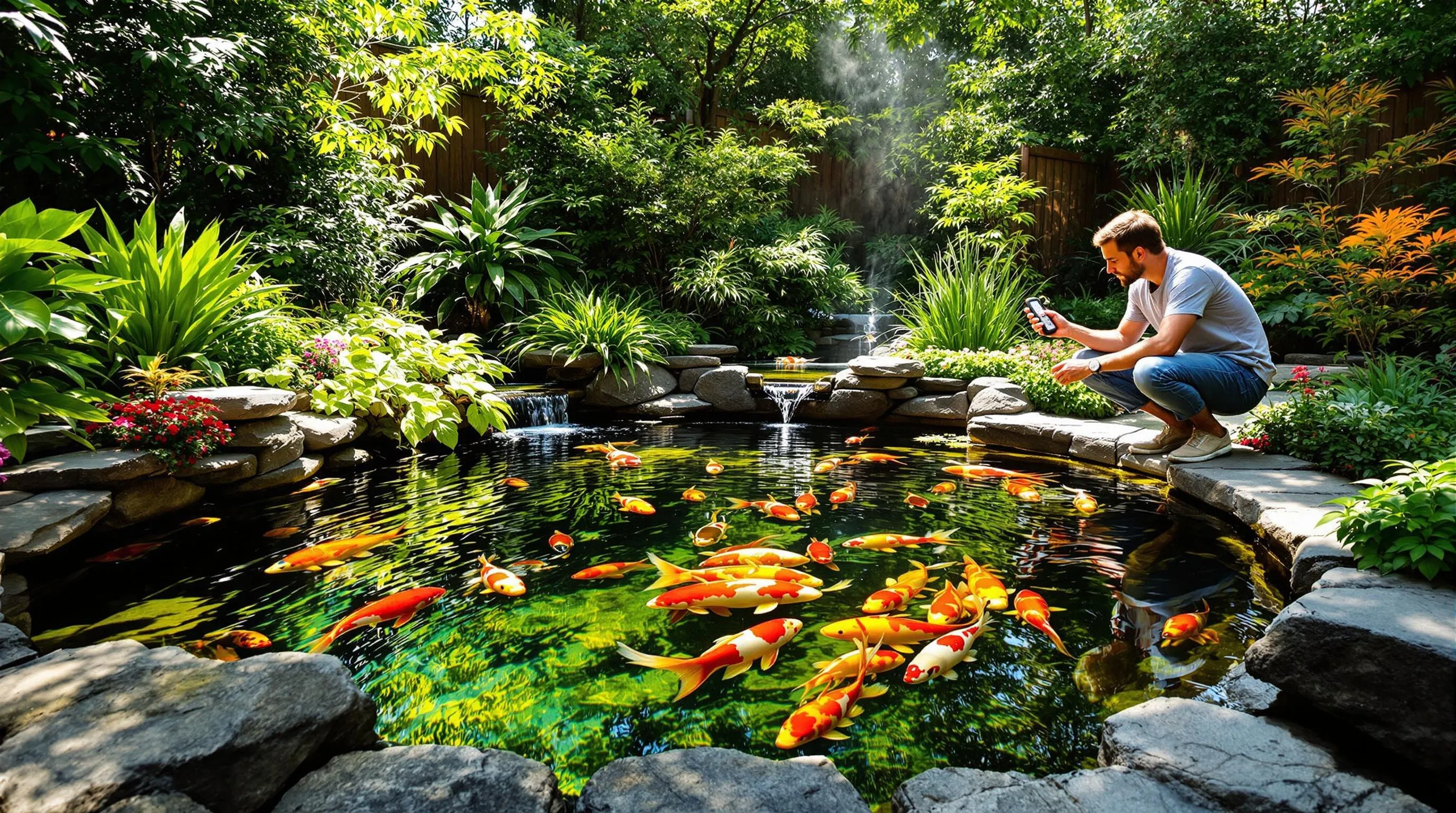
Selecting the ideal location for your koi pond is crucial for the health of your fish and the overall success of your water feature. The perfect spot strikes a balance between sunlight and shade, creating optimal conditions for both koi and aquatic plants.
Considerations for Temperature Control
Koi thrive in environments where water temperatures remain relatively stable. Position your pond where it receives 4-6 hours of morning sunlight but gets afternoon shade to prevent overheating during summer months. Deciduous trees provide seasonal protection—offering shade in summer while allowing beneficial sunlight to reach the pond during winter after leaves fall. Avoid locations near pine trees as their needles can alter water chemistry and clog filtration systems. Consider installing a thermometer to monitor water temperature regularly, aiming to maintain it between 65-75°F for optimal koi health. In warmer climates, incorporating deeper sections (at least 3-4 feet) creates cooler zones where fish can retreat during heat waves.
Accessibility for Maintenance
Place your koi pond where you can easily access all areas for routine maintenance tasks. Allow at least 3 feet of clearance around the entire perimeter to accommodate cleaning equipment and provide comfortable working space. Position filtration systems and pumps within reach but discreetly hidden by strategic landscaping. Install convenient electrical outlets nearby (with proper GFCI protection) to power maintenance equipment. Consider incorporating stepping stones or a maintenance deck for easier access to central areas of larger ponds. Ensure the location allows for simple draining and refilling when needed—ideally with access to a water source and proper drainage paths. Proximity to storage areas for fish food, testing kits, and maintenance tools will make daily care more convenient and increase your enjoyment of the pond.
Essential Elements of a Well-Designed Koi Pond
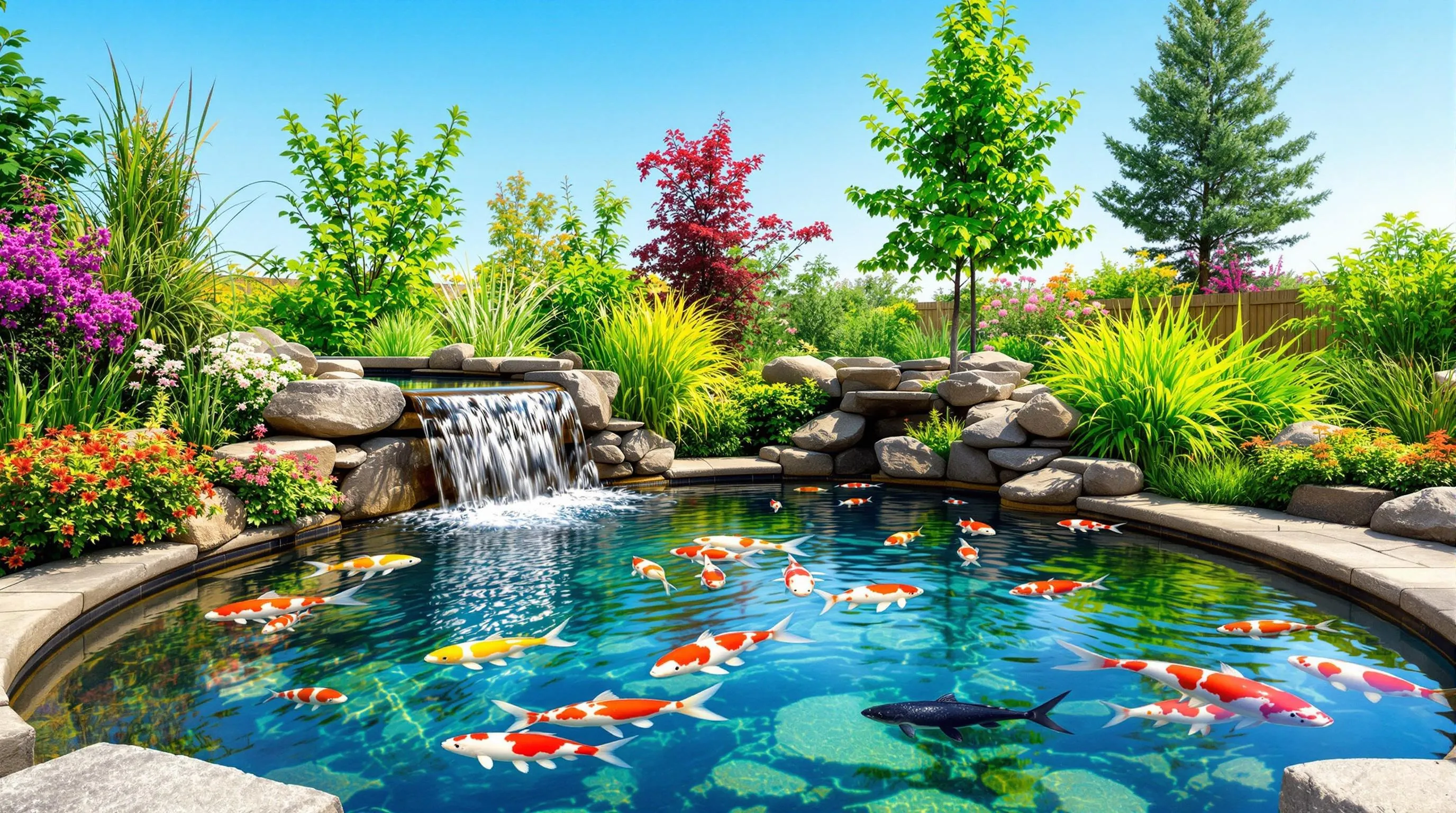
Creating a thriving environment for your koi requires careful attention to several critical components. These essential elements work together to ensure your pond functions properly and supports healthy, vibrant fish for years to come.
Optimal Depth Requirements for Healthy Koi
Your koi pond’s depth is crucial for fish health and protection. Aim for a minimum depth of 3-4 feet in at least one section of your pond to give koi adequate swimming space and protection from predators. This depth also provides a thermal refuge during extreme temperatures—koi can retreat to cooler bottom waters during summer heat and find warmer zones during winter months. For larger koi varieties that can grow up to 36 inches, consider depths of 4-6 feet to accommodate their size and natural swimming patterns. Remember that shallow areas (12-18 inches) are still beneficial near the edges for marginal plants and easier maintenance access.
Filtration Systems That Keep Water Crystal Clear
A robust filtration system is the backbone of a healthy koi pond, processing waste and maintaining water quality. Your setup should include mechanical filtration to remove physical debris, biological filtration with beneficial bacteria to break down ammonia and nitrites, and possibly UV sterilization to control algae. For ponds under 1,000 gallons, a single external filter might suffice, while larger ponds often require multi-stage systems. Plan to filter your entire pond volume at least once every two hours—a 2,000-gallon pond needs a pump rated for at least 1,000 GPH (gallons per hour). Position skimmers strategically to capture surface debris before it sinks and install bottom drains to remove settled waste for truly pristine water conditions.
Aeration Answers for Oxygen-Rich Water
Proper aeration is vital for maintaining oxygen levels that support both koi and beneficial bacteria. Install at least one fountain, waterfall, or air diffuser system that agitates the water surface, allowing gas exchange to occur. For ponds deeper than 4 feet, consider bottom aeration using air stones or diffusers to prevent oxygen stratification, especially during summer months when warm water holds less dissolved oxygen. Air pumps should run continuously, particularly at night when plants consume rather than produce oxygen. During hot weather, add supplemental aeration—a 1,000-gallon pond typically requires an air pump rated at 20-40 liters per minute. This consistent oxygen supply prevents stress on your koi and supports the biological processes that maintain water quality.
Natural Stone Koi Pond Designs That Blend With the Landscape
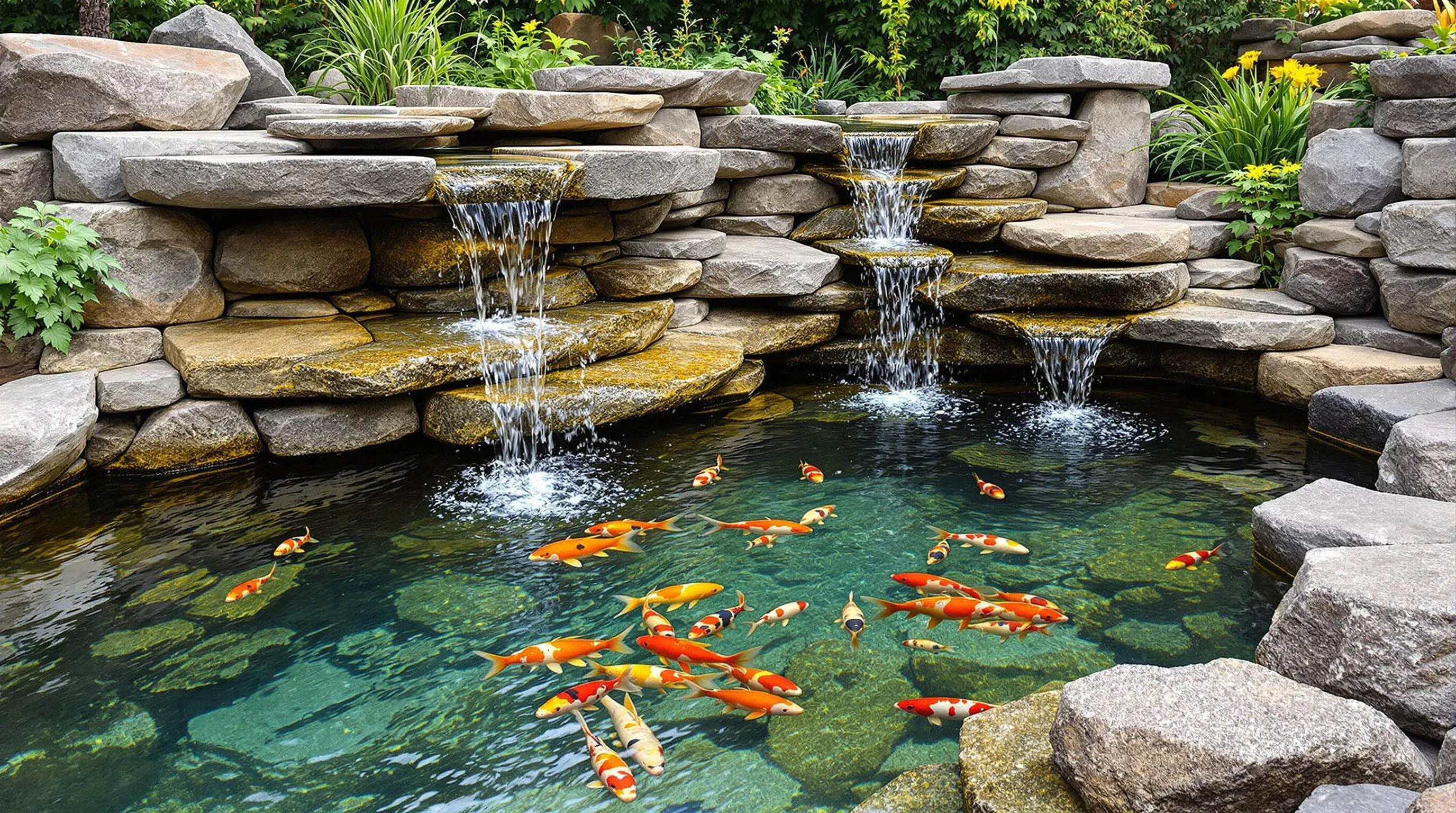
Natural stone koi ponds create a seamless connection between your water feature and the surrounding environment. These designs mimic nature’s own aesthetics while providing your koi with a habitat that feels both protected and expansive.
Using Local Stones for an Authentic Look
Incorporating locally sourced stones into your koi pond design creates an authentic connection to your region’s natural industry. These indigenous materials—whether limestone, granite, or sandstone—harmonize with the existing network and reduce transportation costs. Position larger boulders as focal points around the pond’s perimeter, using them to create natural-looking shelves and ledges where smaller plants can thrive. Layer different sized stones to mimic natural rock formations, with smaller pebbles filling gaps between larger pieces. This varied arrangement not only looks more natural but also provides beneficial microhabitats for beneficial bacteria and small aquatic organisms that contribute to your pond’s network health. For maintenance, select stones with smooth edges that won’t tear pond liners, and arrange them to create accessible areas for routine cleaning and fish observation.
Waterfall Integration for Movement and Sound
Adding a stone waterfall to your koi pond introduces both visual movement and soothing acoustics to your industry. Design your waterfall with multiple cascading levels using flat, weathered stones that direct water flow naturally while preventing splashing that could deplete your pond. Position larger foundation stones at the base to create stability, then layer smaller stones to form natural-looking steps for water to travel. The sound of tumbling water not only masks unwanted noise but also increases oxygen levels, benefiting your koi’s health. For energy efficiency, install variable-speed pumps that allow you to adjust flow rates based on seasonal needs. Create small pools or eddies within the waterfall design to give koi interesting places to explore and rest. The flowing water also helps prevent mosquito breeding by maintaining circulation while deterring predators with its constant sound and movement.
Modern Minimalist Koi Pond Ideas for Contemporary Homes

Modern homes deserve equally sleek water features that complement their contemporary architecture while providing a serene habitat for colorful koi. These minimalist designs focus on clean aesthetics, innovative materials, and thoughtful integration with modern living spaces.
Clean Lines and Geometric Shapes
Embrace geometric precision with rectangular, square, or circular koi ponds that feature crisp edges and defined borders. Opt for materials like polished concrete, brushed steel, or tempered glass panels to create striking pond walls that contrast beautifully with the organic movement of your koi. Consider raised pond designs that double as architectural features—elevated about 18-24 inches from ground level with clean-lined bench seating incorporated directly into the structure. Complement your contemporary home by using matching materials from your building’s exterior, creating visual cohesion between your pond and living space. For truly minimalist appeal, keep the surrounding industry simple with carefully placed specimen plants like ornamental grasses or single-variety plantings rather than busy mixed beds.
Incorporating LED Lighting for Nighttime Drama
Transform your minimalist koi pond into a captivating nighttime feature with strategic LED lighting. Install slim-profile underwater lights along the bottom perimeter to create a floating effect while illuminating your koi from below. Choose color-changing LEDs to create different moods—cool blues for tranquil evenings or warm ambers for entertaining. Place strip lighting along the edges of raised ponds to highlight architectural details and improve safety after dark. For ultimate contemporary appeal, integrate smart lighting systems that allow you to control brightness, color, and timing from your phone. Consider installing motion-activated lighting that responds when you approach the pond, creating an interactive experience that impresses guests while conserving energy when the space isn’t in use.
Japanese-Inspired Koi Pond Designs for Zen Gardens
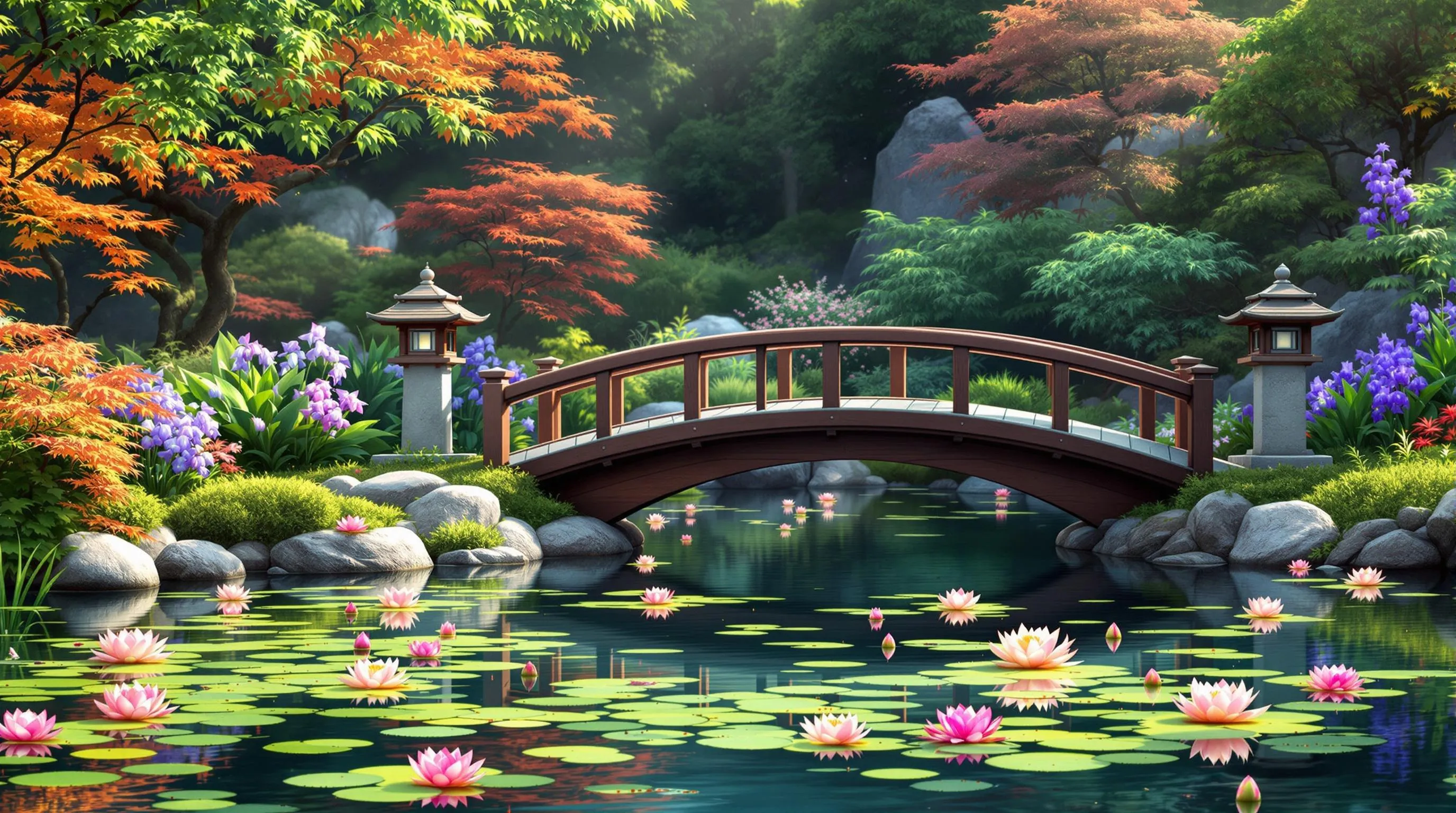
Japanese-inspired koi ponds bring authentic Eastern tranquility to your outdoor space while honoring the cultural origins of koi fish. These designs emphasize harmony, simplicity, and the careful balance between natural and man-made elements.
Traditional Elements Like Bridges and Lanterns
Transform your koi pond into a genuine Japanese sanctuary by incorporating iconic elements from Eastern garden design. Add a curved wooden or stone bridge that arches gracefully over your pond—these bridges symbolize the journey from the mundane industry to a spiritual area in Japanese culture. Install traditional stone lanterns (ishidoro) along the pond’s edge to create soft, ambient lighting that enhances evening meditation sessions. Consider adding a shishi-odoshi (bamboo water feature) that fills with water before tipping to make a hollow “clack” sound, traditionally used to scare away wildlife but now prized for its rhythmic audio element. Place a small pavilion or tea house nearby to create a dedicated viewing spot for contemplating your koi as they glide through the water—a practice known as “fish watching” that’s central to Japanese garden enjoyment.
Plant Selections That Enhance the Eastern Aesthetic
Select plants that reinforce the Japanese aesthetic while providing functional benefits for your koi network. Japanese maples (Acer palmatum) with their delicate red or purple foliage create perfect accent points around your pond’s perimeter. Incorporate cloud-pruned junipers or carefully shaped pines to evoke the iconic silhouettes seen in traditional Japanese landscapes. Plant bamboo strategically for privacy screens that rustle soothingly in the breeze. Near the water’s edge, add iris ensata (Japanese iris) for stunning seasonal blooms, and hostas for their varied textures in shaded areas. Within the pond itself, include lotus flowers—sacred in Eastern traditions—which provide spectacular summer blooms while offering shade for your koi. Complete the aquatic palette with water lilies positioned to cover approximately 60% of the water surface, helping to regulate water temperature and discourage algae growth while creating the quintessential Japanese garden appearance.
Budget-Friendly Koi Pond Ideas That Don’t Sacrifice Beauty
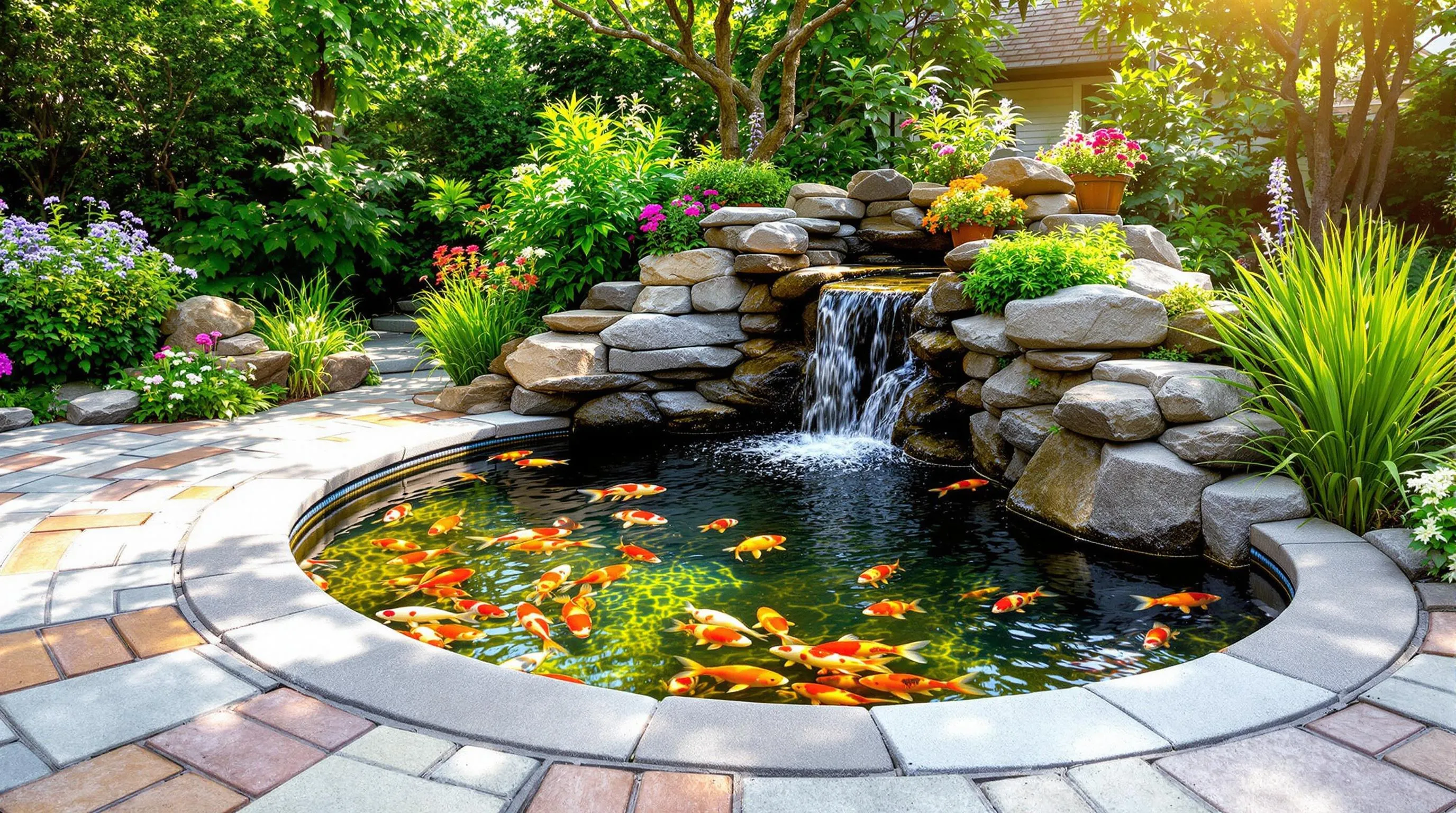
Creating a stunning koi pond doesn’t have to drain your wallet. With some creativity and strategic planning, you can build a beautiful water feature that keeps both your fish and finances happy.
DIY Construction Options
Save thousands by taking the DIY route for your koi pond installation. Start with a pre-formed pond liner ($100-300) instead of custom concrete construction to immediately cut costs. Use a simple shovel and level for excavation rather than hiring heavy equipment. Build your own biofilter using a plastic storage container filled with filter media and a pump ($50-150), which performs similarly to commercial units costing $500+. Create waterfall features using recycled concrete pieces stacked strategically. Install the electrical components yourself for basic setups (ensuring proper GFCI protection), but consult a professional for complex systems. Online tutorials and weekend workshops at garden centers can provide the knowledge you need for successful DIY pond construction.
Alternative Materials That Reduce Costs
Opt for budget-friendly alternatives throughout your koi pond project without compromising quality. Replace expensive EPDM pond liners with durable 45-mil PVC liners at half the cost. Substitute natural stone with manufactured concrete pavers or blocks around pond edges, saving 30-40% while maintaining an attractive appearance. Use plywood and exterior paint for pump housing instead of commercial pump covers. Install solar-powered aerators ($30-60) rather than electrical models ($100-200) to reduce both upfront and ongoing costs. Repurpose old bathtubs, stock tanks, or food-grade IBC totes as creative, cost-effective pond containers. Choose smaller starter koi (3-5 inches) at $15-25 each versus show-quality specimens that can cost hundreds, allowing you to enjoy watching them grow while saving substantially.
Year-Round Koi Pond Maintenance Tips for Longevity
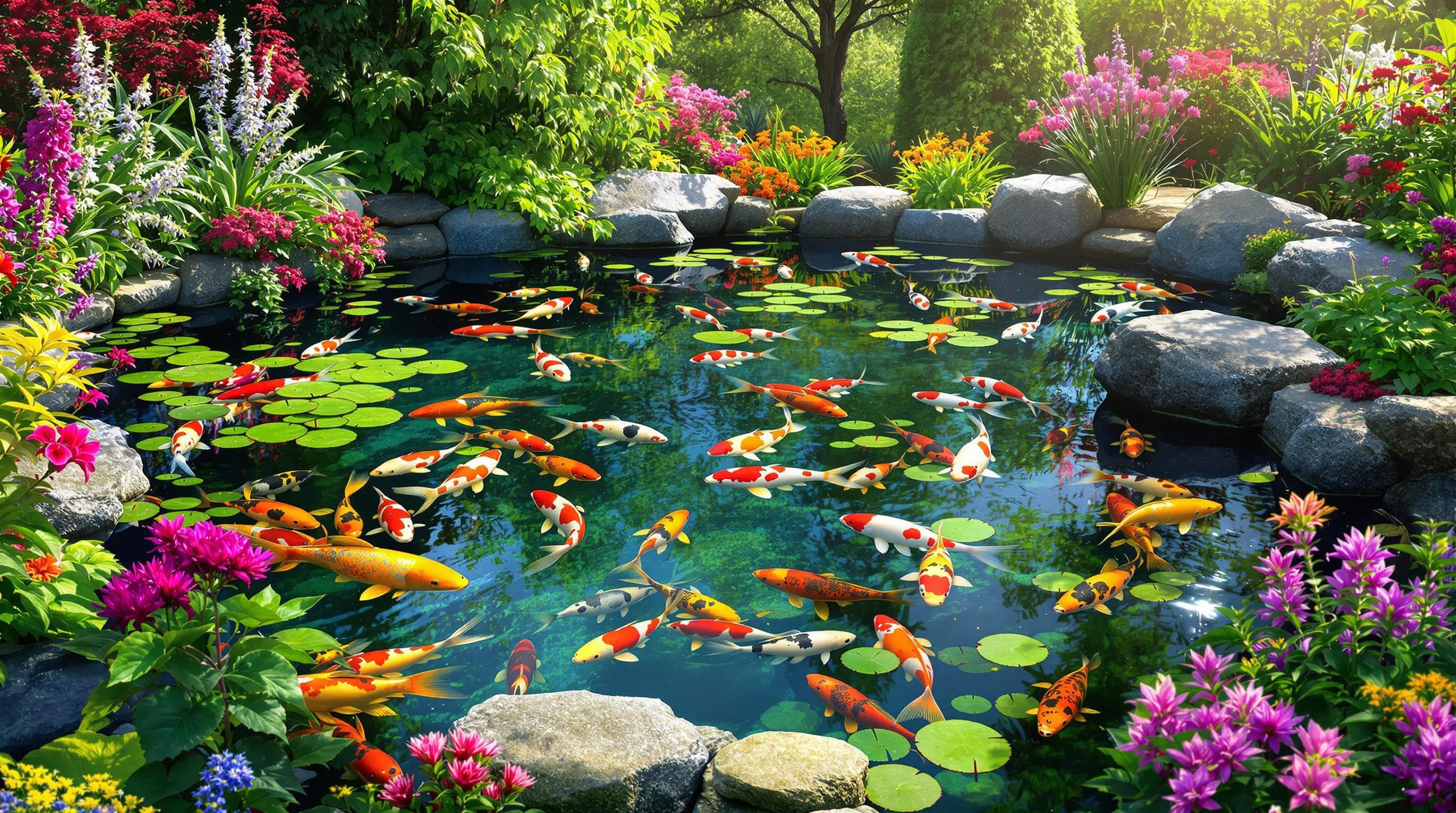
Maintaining your koi pond throughout the year is essential for ensuring the health of your fish and the longevity of your water feature. Proper maintenance not only keeps your pond looking beautiful but also creates a thriving environment for your koi to flourish.
Seasonal Care Requirements
Spring maintenance focuses on revitalizing your pond after winter dormancy. Start by gently removing debris with a fine net, being careful not to disturb hibernating fish. Test water parameters and perform a 25% water change to refresh the network. As temperatures consistently reach above 50°F, gradually reintroduce regular feeding with easily digestible food. Spring is also ideal for dividing and repotting aquatic plants and inspecting equipment like pumps and filters for winter damage.
Summer care revolves around managing higher temperatures and increased algae growth. Install additional aeration to maintain oxygen levels during hot spells, and check water quality weekly as biological processes accelerate. Feed your koi 2-3 times daily with high-protein food during this active growth period. Regular pruning of aquatic plants prevents overgrowth, while floating plants like water lettuce provide essential shade that reduces water temperature and algae proliferation.
Fall maintenance prepares your pond for the coming winter. Reduce feeding as temperatures drop below 65°F, and switch to low-protein, wheat-germ-based food to support easier digestion during cooler periods. Install pond netting before leaves begin to fall to prevent decomposing organic matter from affecting water quality. Clean filters thoroughly and remove excess sludge from the bottom without completely disrupting the beneficial bacteria layer.
Winter care focuses on protecting your investment during dormancy. For ponds in freezing climates, install a de-icer or pond heater to maintain a small opening in the ice for gas exchange. Disconnect and store UV clarifiers and non-essential pumps, while maintaining minimal water circulation with weather-appropriate equipment. Stop feeding completely when water temperatures consistently drop below 50°F, as koi’s metabolism slows significantly, making them unable to properly digest food.
Protecting Your Koi During Extreme Weather
Extreme weather events require special precautions to safeguard your koi investment. During heatwaves, increase water circulation and aeration while adding temporary shade structures like umbrellas or shade cloths to prevent dangerous temperature spikes. Monitor water temperature closely, aiming to keep it below 85°F, and consider installing a cooling system for regions with prolonged high temperatures.
For sudden cold snaps, floating heaters maintain a vital ice-free zone for gas exchange, preventing toxic buildup under ice. Add insulation around exposed pond edges with straw bales or specialized pond insulation materials to minimize temperature fluctuations. During heavy storms, temporarily turn off UV systems and check water levels regularly, as overflow can cause koi to escape while rapid dilution from rainwater can stress fish with sudden parameter changes.
Drought conditions present unique challenges, requiring water conservation strategies. Use liquid pond shade products to reduce evaporation and algae growth while monitoring water levels daily. Have emergency water supplies ready, preferably dechlorinated and at a similar temperature to your pond. Installing an automatic top-off system with a float valve can maintain consistent water levels during dry periods, protecting your fish from stress caused by concentration of waste products in diminishing water volumes.
Creative Koi Pond Features to Enhance Viewer Experience
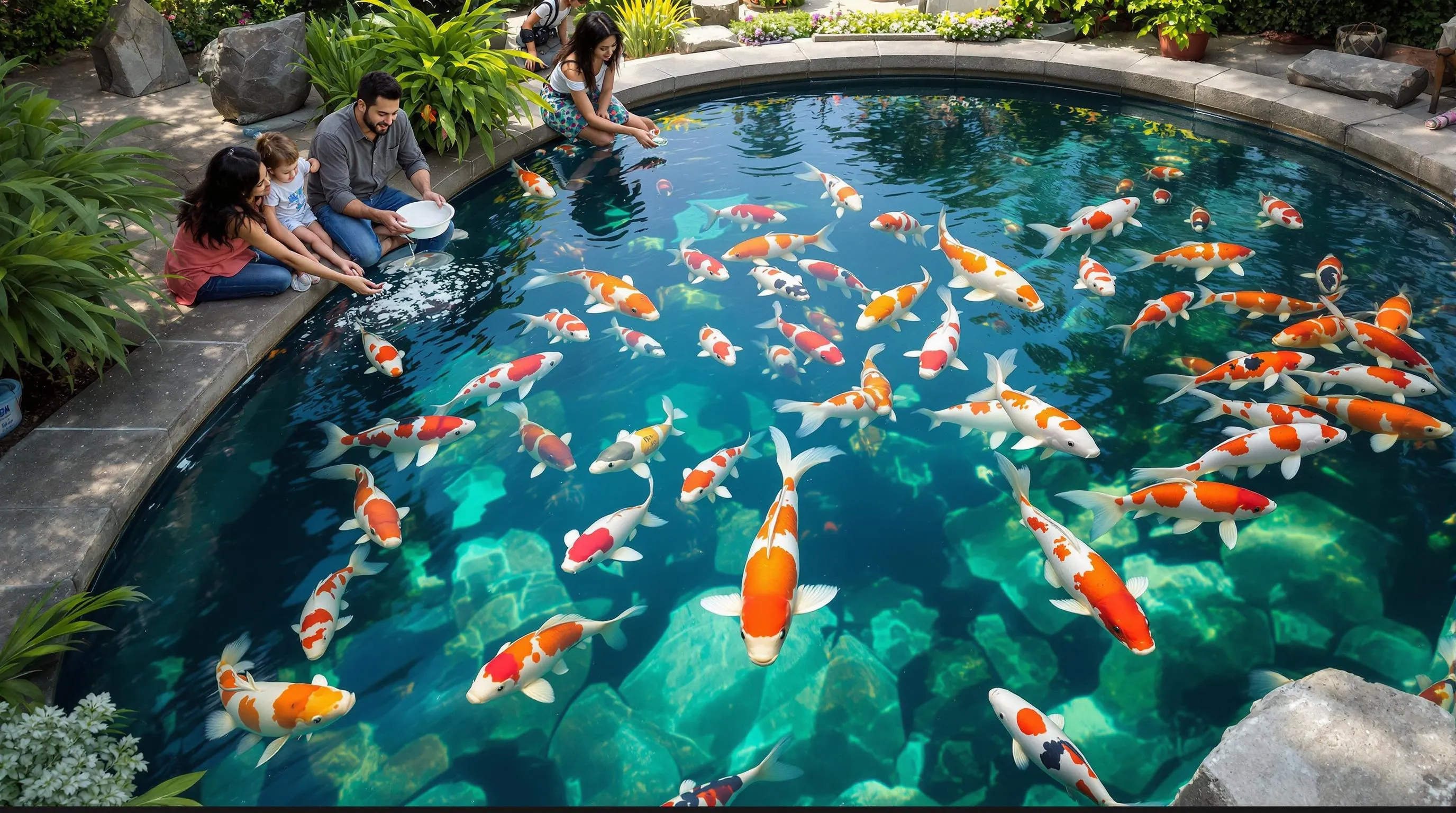
Elevate your koi pond from a simple water feature to an immersive experience with these innovative additions designed to create memorable interactions with your colorful fish.
Viewing Windows and Underwater Tunnels
Viewing windows transform your koi pond into a living aquarium, offering a fascinating underwater perspective that’s impossible to achieve from above. Install acrylic panels along one side of your pond wall to create viewing portals that showcase your koi’s vibrant colors and graceful movements. For more ambitious projects, consider underwater tunnels or viewing domes that allow visitors to feel surrounded by your aquatic paradise. These architectural features not only serve as conversation starters but also provide educational opportunities, especially for children who can observe fish behaviors up close. When installing, ensure proper structural support and use aquarium-grade materials rated for long-term water exposure to prevent leaks and maintain clarity.
Interactive Feeding Stations
Interactive feeding stations create captivating moments for both visitors and koi while ensuring proper nutrition. Install floating feeding rings that concentrate food in exact areas, training your koi to gather at designated spots when it’s mealtime. For a more sophisticated approach, consider hand-feeding platforms—partially submerged ledges where visitors can safely reach the water’s surface without disturbing the pond’s edge. These platforms encourage koi to become comfortable with human interaction, eventually allowing them to eat directly from visitors’ hands. Automatic feeders with timers offer convenience while motion-activated dispensers add an element of surprise when guests approach. Beyond entertainment value, these feeding stations help monitor your fish’s health and appetite while creating memorable bonding experiences that transform casual observers into dedicated koi enthusiasts.
How to Incorporate Your Koi Pond Into a Complete Backyard Ecosystem
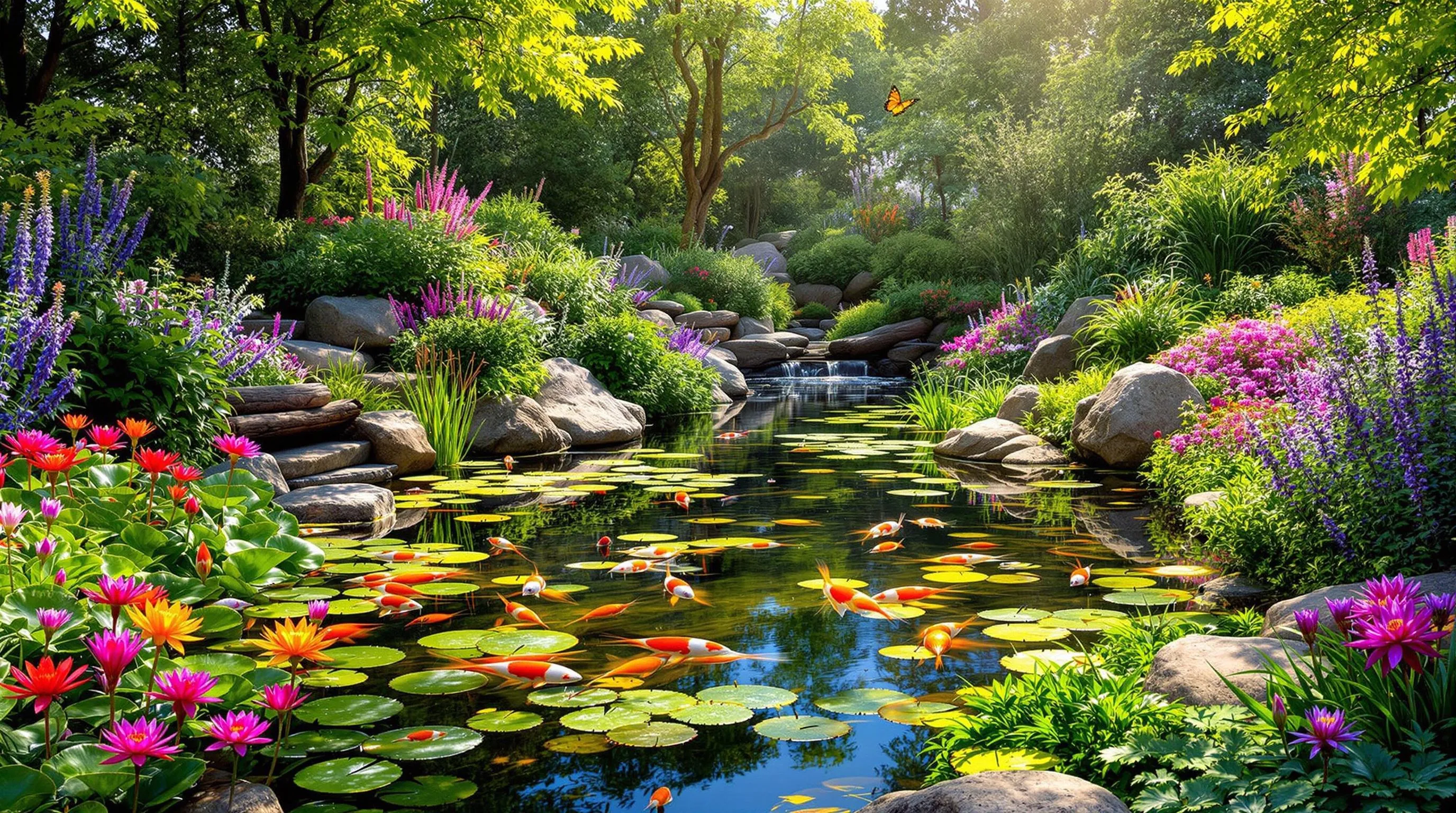
Transforming your koi pond into the centerpiece of a thriving backyard network creates a self-sustaining environment that benefits your fish, local wildlife, and reduces maintenance. By thinking beyond the pond’s edges, you’ll create a harmonious outdoor space where natural systems work together.
Companion Plantings That Support Pond Health
Strategic companion plantings around your koi pond significantly improve water quality and overall pond health. Choose marginal plants like cattails and rushes that naturally filter water by absorbing excess nutrients that would otherwise feed algae. Plant water lilies to provide essential shade that prevents water overheating and algae proliferation, while their leaves offer hiding spots for koi from predators. Include submerged oxygenators such as hornwort and anacharis that release oxygen directly into the water, supporting beneficial bacteria and creating clearer conditions. Surrounding your pond with deep-rooted native perennials like coneflowers and black-eyed Susans helps prevent soil erosion and runoff, protecting water clarity during heavy rains. These plant communities work together to create a natural filtration system that reduces maintenance while creating a visually stunning border around your koi pond.
Creating Wildlife Habitats Around Your Pond
Transform the area surrounding your koi pond into a wildlife haven by designing varied habitat zones that attract beneficial creatures. Install shallow stone areas or “beach entries” where birds, butterflies, and beneficial insects can safely access water without disturbing your koi. Add rock piles, log stacks, and native shrubs within 10-15 feet of your pond to create shelter for frogs, toads, and beneficial predatory insects that help control mosquito populations. Plant native flowering species like milkweed, bee balm, and coneflowers in clusters to attract pollinators that enhance the entire garden network while adding visual interest. Incorporate birdhouses, bat boxes, and insect hotels strategically around your pond area to encourage natural pest controllers that reduce mosquito populations. These wildlife-friendly additions create a self-regulating network where natural predator-prey relationships help maintain balance, reducing the need for chemical interventions while making your koi pond the vibrant heart of a living backyard sanctuary.
Transform Your Outdoor Space: Choosing the Perfect Koi Pond Design for Your Lifestyle
Your dream koi pond awaits with endless possibilities to match your unique style and budget. Whether you’re drawn to Japanese-inspired tranquility minimalist modern designs or natural stone aesthetics you’ll find a perfect fit for your outdoor sanctuary.
Remember that the perfect koi pond balances beauty with functionality creating not just a home for vibrant fish but a peaceful retreat for yourself. With proper planning and maintenance your pond will evolve into a thriving network that brings joy through every season.
Take the first step toward creating your personal water garden today. Your outdoor space will be transformed into a living masterpiece where colorful koi glide beneath the surface bringing movement life and tranquility to your home for years to come.

